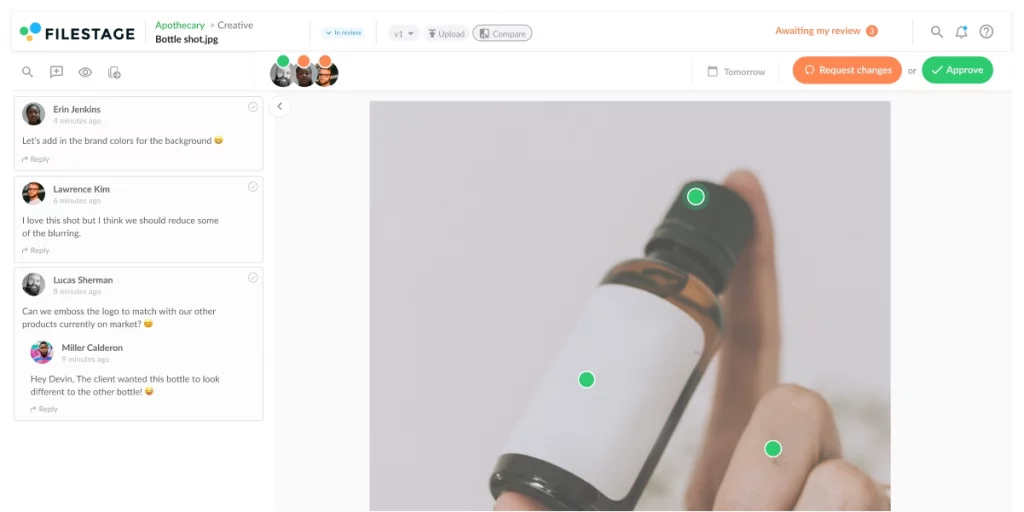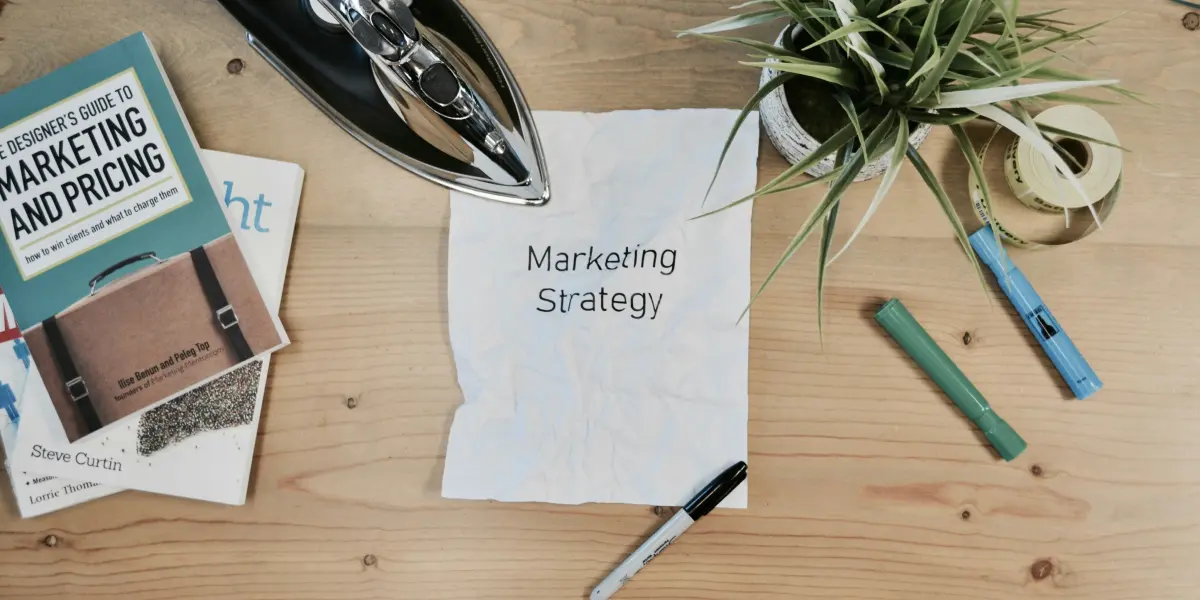You can’t build a great building on weak foundations, and the same goes for your marketing campaign.
By the end of this article, you’ll know how to build a campaign plan that gets results. We’re going to look at the entire campaign planning process, as well as an overview of the most popular campaign phases and how you can get the best from each one.
Here’s a snapshot of the campaign planning process:
- Identify your objectives
- Decide what resources you need
- Set a timeline for your campaign
- Create your campaign content
- Launch your campaign
- Track campaign performance
Before we get stuck in, let’s get to grips with what we mean when we talk about marketing campaigns.
What is a marketing campaign?
A marketing campaign is a coordinated series of activities, strategies, and tactics designed to help a business achieve a specific goal within a set timeframe. These goals could include increasing brand awareness, driving sales, promoting a new product or service, or engaging with customers.
Most marketing campaigns typically make use of a combination of different mediums, like TV or video ads, print ads, social media, and more. The combination of channels in each campaign will differ depending on things like budget and target audience.
How to plan your marketing campaign
Creating a marketing campaign is no joke. With so many moving parts to manage, there’s quite a bit of room for error. And these errors can be extremely costly for businesses.
No pressure, eh?!
The good news is, most of the heavy lifting happens before you ever start creating the campaign content. So, with the right planning and preparation, you can set everything up for success ahead of time.
Let’s do this.
1. Identify your objectives
Before you begin your marketing campaign plan, you need to pin down exactly why you’re making a marketing campaign in the first place. What do you want to achieve for the business? What’s the end goal?
Every brand’s campaign objectives will be different. For example, if you’re making a campaign for a Wi-Fi provider, your aim might be to promote a new internet package or deal. While a whisky brand might create a campaign to encourage gifting purchases in the run up to Christmas.
Let’s take a look at some key factors to keep in mind when defining your campaign goals and building an effective marketing campaign template.
Supercharge your marketing reviews
Share, review, and approve all your content in one place with Filestage.
Consider your target audience
Think about who you’re trying to reach with your marketing campaign and the actions you want them to take. For example, if you’re targeting Gen Z, your objectives might be measurable with metrics like social media shares or video views. Whoever you’re talking to, put their experiences at the heart of your objectives.
Align campaign goals with brand goals
Campaign objectives that don’t help drive your business objectives forward will most likely be irrelevant in the long run. So, having an eye on the bigger picture for your business will keep your team focused throughout the whole campaign planning and creation process.
Be specific
Objectives should be specific, clear, and measurable to keep everyone on the same page. As well as nipping any ambiguity in the bud and driving motivation, setting specific campaign metrics makes it easier to see how well your campaign performed. You’ll then go into your next campaign that bit wiser on what works and what doesn’t.
Make them attainable
Shooting for the stars might be a thrill, but it’s important to strike a balance between ambitious and attainable when setting campaign goals. It’s unlikely you’ll actually go from 100 to 500,000 Insta followers with a single social campaign, for example.
2. Decide what resources you need
Once your organization has its eyes on the prize, it’s time to figure out exactly what kind of support you need.
At this stage, you’ll want to get together with your marketing team and map out the different phases of your campaign (more on that in a bit). Campaign plans can often shift as you work through the project, but having a clear idea of what media you’d like to use in advance will give more insight into important factors like timings and budget.
What channels will your campaign run on? Will you need visuals, copy, or a new webpage? Can you do everything in-house or do you need to outsource to freelancers or a creative agency? These are just some of the questions to ask yourself before you start making your marketing campaign.
3. Set a timeline for your campaign
Alrighty, now you’ve decided what resources are needed and have a rough idea of how long each phase will take, you can start setting out a timeline to help manage your campaign.
Your timeline is an important part of your campaign plan because it helps you stay organized, manage time wisely, and make sure everything gets done on time. Involve your stakeholders and teammates to make sure everyone is aware of what needs to be done when.
You should aim to create a realistic timeline based on your team’s available capacity, but that doesn’t mean it’s going to be set in stone. Curveballs will likely get thrown into the mix as you progress through the campaign, and that’s okay. Just make sure to reflect any changes and progress in your timeline so everyone’s up to speed at all times.
4. Create your campaign content
So, you’ve done the groundwork for your campaign by setting objectives, resources, and timelines. That means you’re all set to start creating your campaign content. Hoorah!
This is probably one of the most exciting parts of the campaign process, as the campaign starts to take shape and you get to see your campaign plans come to life. But it can also be one of the trickiest parts if not managed properly.
Here are the key things you need to run the content creation stage like a well-oiled machine.
A killer creative brief
Your marketing campaign will live and die by your creative brief. This is where your team’s research around target audience and campaign objectives comes together into a clear, compelling marketing strategy.
A creative brief is a single document that highlights the problem you need to solve and the relevant insights that can help give your marketing campaign a unique edge.
Generally, a great creative brief will end with one single-minded proposition from which your creative teams can build their concepts. The chosen concept will determine how each phase of your campaign looks and feels. So it’s crucial to kick things off right with a carefully considered creative strategy.
Seamless collaboration
Collaboration is crucial for every stage of the marketing campaign planning process. But it’s especially important during content creation when teams need to share ideas, review content, and give feedback.
You need open and honest communication as well as a tool or two to streamline workflows and support real-time collaboration regardless of location.
The tools you decide to use will depend on your specific needs. So, if your goal is to create campaigns that are loaded with slick visuals, you might go with a design collaboration tool. Or if you’re creating social media campaigns in-house, you might go for a social media content creation tool. You get the gist!
A solid review process
This one’s a biggie. The last thing anyone needs when they’re deep in the content creation process is to have to chase or gather feedback from multiple people across different platforms.
A faulty review process can throw your team’s workflow off track real quick. Which is why you need a review and approval tool like Filestage.
Filestage makes campaign planning and creation easier in so many ways. It’s super intuitive and easy to use, for starters. And because it supports a large range of file formats (designs, documents, videos, audio files, live websites – you name it), your team can review and give feedback on all campaign assets via one secure platform.
Here’s how you can use Filestage to review your next campaign:
- Sign up to Filestage for free
- Start a project and upload files
- Invite collaborators or send them a link
- Collect feedback and set tasks in the comments
- Track and upload new file versions as needed
Told you it was easy!
Still think a review and approval process isn’t important? Check out these epic cosmetic advertising fails.

5. Launch your campaign
The moment has come. Your campaign is ready to go out into the world.
To launch your campaign without a glitch, get all your materials ready and double check that nothing’s been forgotten or overlooked.
You might have a prearranged launch date that aligns with your campaign goals, or you may need to pick an official date once the project reaches the final stages. Just make sure your team and stakeholders are in the loop.
It’s a good idea to engage with your audience and ramp up excitement before and/during the campaign. And of course, take a moment to celebrate and acknowledge your team’s hard work. You did it!
6. Track campaign performance
Once your campaign is up and running, it’s important to monitor performance and make adjustments as needed.
Based on the specific goals you set at the beginning of the campaign planning process, you should be able to see if each chosen channel is performing as hoped. If not, you might need to adjust or reallocate media budgets during the campaign.
Once the campaign has finished, it’s important to record and document the final results of your marketing campaign. This might include views and reactions on social media, or the number of visits to the website that were converted into sales.
Campaign tracking will let you know how effective your approach was. And this, in turn, will help with future decision making on your next marketing project.
Planning your campaign phases
Before we wrap things up, let’s take a look at the most common campaign phases and how you can make the most of specific marketing channels.
This is simply an example of how you could phase your campaign for a seamless customer journey. But of course, you should choose the channels that work best for your goals.
Social media ads
You might choose to run your entire campaign on social media if it works for your target audience. Or you can use it to deliver part of a campaign in combination with other channels.
Here are the two main types of social media ads.

Paid social ads
Pay for targeted ads that get your marketing content in front of the right people. Paid social media ads are also particularly useful for advertising time-sensitive offers or increasing content reach quickly.
Organic social ads
Organic social media advertising involves creating and sharing content without paying for promotion. It’s great for showcasing brand authenticity and building a relationship with your audience.
The best marketing campaigns use a combination of paid and organic social advertising.
Here’s a simple example of how to leverage the best of both:
- Tease your new marketing campaign with organic content in the run up to launch day
- Use paid social media to kickstart the campaign and spread the word fast
- Complement paid efforts with organic content to keep momentum, start conversations, and build on the campaign story
TV ads
Many traditional marketing campaigns center around a big TV ad that reaches people en masse for widespread awareness.
This marketing channel comes with a hefty price tag for both production and distribution, but its impact can be worth it if you have a sufficient marketing budget.
To make the best use of TV advertising, create compelling and memorable ads that grab attention and resonate with viewers. It’s also important to choose channels and time slots that align with your audience’s viewing habits, and air your ads consistently to reinforce brand recall.
Out of home ads
Out of home (OOH) advertising involves using billboards, posters, or guerilla ads to reach a broader audience in areas of high traffic.
OOH ads can be interactive with QR codes, physical, and digital engagement features. Or they can be static and striking. Either way, OOH is often the purest form of your campaign concept as these ads need to be quick, simple, and memorable for busy passersby.

This form of advertising can complement and reinforce other campaign channels, contributing to a cohesive and integrated campaign strategy.
Final thoughts
And that’s us done and dusted! I hope this article helps you plan your next campaign with confidence. And if you’d like to see how Filestage can help you review and approve all your campaign content, start your free trial today.








